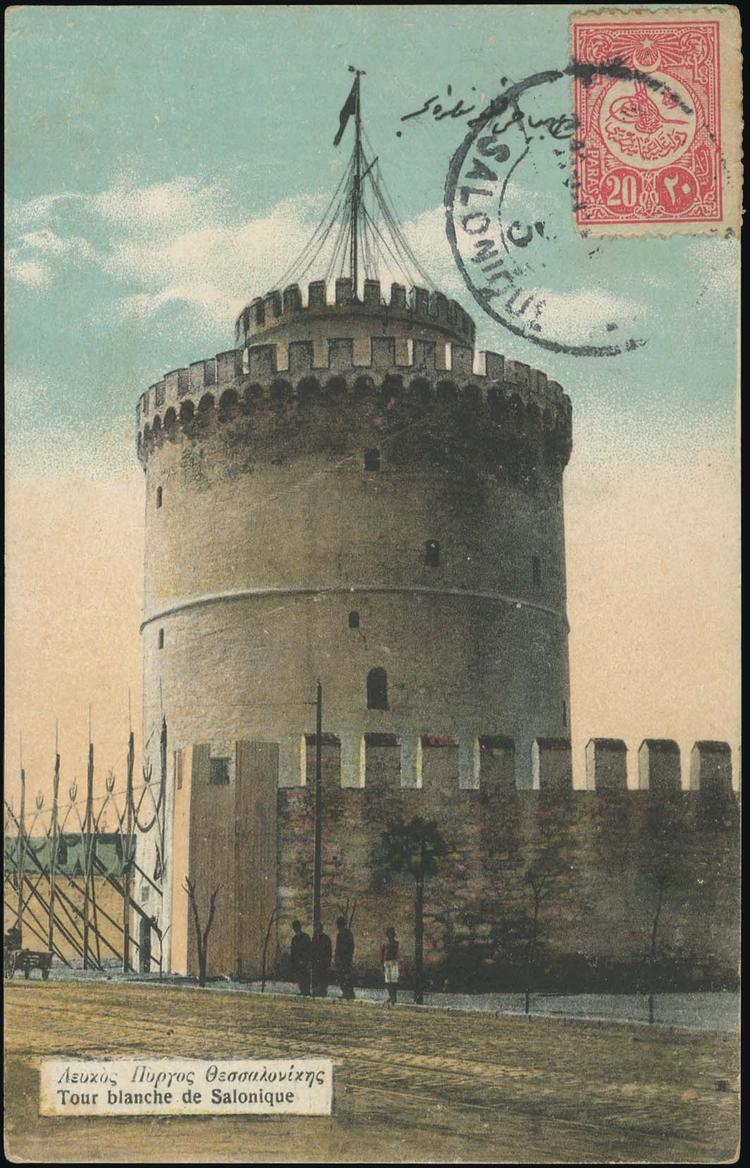
Residents of Thessaloniki, Greece’s second largest city, often use its White Tower as a point of reference when giving directions in the beautiful seaside city.
That’s because the tower is by far Thessaloniki’s most iconic monument. The ancient city, located in northern Greece, has a rich history stretching from antiquity to the modern era but is most noted for its importance during the Byzantine period.
During that time, Thessaloniki was a competitor with the great city of Constantinople in terms of its wealth and influence.
The White Tower was a witness to many of the city’s most important historical events, and its role in Thessaloniki changed, as did the ownership of the city itself throughout the millennia.
Studying the history of the White Tower means learning the history of Thessaloniki.
The Tower’s strategic location along the Thermaic Gulf made it perfect for guarding the city from threats by ships.
The White Tower in Thessaloniki built atop ruins of Byzantine fortification
The current 34 meter (111 foot) tall structure was built on top of a Byzantine fortification first mentioned in the 12th century AD.
After the Ottoman Empire invaded and seized control of the city in 1430, the existing tower was built on top of the old Byzantine structure. It was connected to the city’s defensive walls, most of which were unfortunately destroyed in 1866.
Throughout its Ottoman history, the White Tower was called “the Tower of Blood” or “the Red Tower” because of its reputation as a prison in which many were brutally tortured.
The story of how the tower became known as “the White Tower” is a matter of historical debate.

Some say that when the Greeks took Thessaloniki back from the Ottoman Empire during the First Balkan War in 1912, they painted the tower white. This act symbolized an end to the structure’s brutal history and the beginning of its status as a symbol of the city.
Others have noted that in early photographs taken before 1912, the Tower was in fact already white.
A popular story states that in the second half of the 19th century, the Ottoman Empire attempted to literally “whitewash” the tower’s brutal history by considering a new name for the monument. In exchange for his freedom, a prisoner named Nathan Guidili suggested that they paint the tower white and call it the “White Tower.”
Regardless of its origin, by the early 20th century, the popular name for the structure was the White Tower, and it has remained so until this day.
During World War I, the White Tower served as a center of communications for the Allies, as well as a safe place for the storage of antiquities and other priceless artifacts from the ancient city. It then housed the headquarters for Thessaloniki’s air defense until 1983 when it became property of the state.
Building now houses a museum
Currently, the monument is home to a museum which lays out the history of Thessaloniki. Visitors can climb up the Tower’s winding stairs until they reach its fascinating exhibition space.
At the top of the tower, visitors can admire breathtaking views of the entire city and the Thermaic Gulf.
Thessaloniki’s famous seaside pedestrian street, the promenade, also passes by the White Tower, making it a hangout spot for many of the city’s residents. It is by far the best location for photos, encompassing the entire history of the city and showing it off to its best advantage.
See all the latest news from Greece and the world at Greekreporter.com. Contact our newsroom to report an update or send your story, photos and videos. Follow GR on Google News and subscribe here to our daily email!



